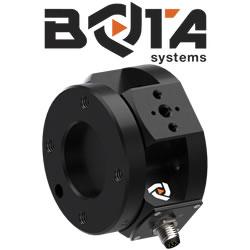BRM Announces Nylon Abrasive Brushes for Surface Finishing and Deburring; NamPower Brush Tools Remove Burrs and Improve Surface Condition
Brush Research Manufacturing (BRM), maker of flexible hones and a full line of industrial brushes, announces NamPower brush tool benefits. Nylon abrasive brushing replaces time-consuming manual finishing operations without requiring dedicated machinery, rigid setups, or specialized tooling.
Los Angeles, CA October 30, 2013
Brush Research Manufacturing (BRM), maker of Flex-Hone® tools and high-performance industrial brushes, is announcing the advantages of nylon abrasive brush tools. NamPower brushes blend edges, remove burrs, and improve surface finish while reducing cycle times and improving part quality. By learning more about BRM power brushes, manufacturers can select the right surface finishing solution.
Designed for use with semi-automatic and fully-automatic equipment, NamPower brush tools are replacing offhand deburring and metal finishing in automotive, aerospace, and appliance manufacturing. Like flexible files, the abrasive nylon filaments in these power brushes conform closely to part contours, wiping across part edges while continuously exposing sharp new abrasive grains.
The NamPower Advantage
NamPower nylon abrasive brushes achieve maximum burr removal rates and optimum surface finish at the same time. The "N" in NamPower stands for nylon, a tough synthetic polymer with good memory, excellent fatigue properties, and chemical and moisture resistance.
Although the nylons used in nylon abrasive materials (NAM) have varying degrees of heat resistance, NamPower technology uses a unique flow-through cooling system that promotes brush life. Unlike other coolant systems, NamPower brush tools allow fluid to flow from the brush center instead of supplying lubrication only from the outside.
NamPower nylon abrasive brushes are also unique in that that they use a combination of ceramic and silicon carbide (SC) abrasives. Tough, sharp, and hard, these cost-effective abrasive grits are standard on both NamPower abrasive disc brushes and NamPower composite hub wheels brushes. Available via the BRM website, the NamPower Resource Guide describes these brush tools in detail.
Why Nylon Abrasive Brushing Is Better
Nylon abrasive brushing offers greater consistency than hand filing and increased flexibility over the rigid tools used in robotic and automated workstations. In addition to providing a consistent brushing action, NamPower brush tools can accommodate demanding part contours, entering small spaces and smoothing sharp edges.
Unlike mass media finishing, abrasive flow machining, thermal deburring, and electro-chemical deburring (ECD), NamPower technology does not require dedicated machinery, special tooling, or rigid setups. For manufactures who want greater flexibility in terms of operations and equipment, nylon abrasive brushes from BRM are the right choice.
About Brush Research Manufacturing
Brush Research Manufacturing (BRM), makers of a full line of cylinder honing tools and industrial brushes, is located in Los Angeles, California. For 55 years, BRM has been solving difficult finishing problems with brushing technology. BRM's Flex-Hone® tool is the standard against which all other surface finishing solutions are compared. NamPower technology is ideal for outer diameter (OD) burr removal and surface condition improvement.
Featured Product

Bota Systems - The SensONE 6-axis force torque sensor for robots
Our Bota Systems force torque sensors, like the SensONE, are designed for collaborative and industrial robots. It enables human machine interaction, provides force, vision and inertia data and offers "plug and work" foll all platforms. The compact design is dustproof and water-resistant. The ISO 9409-1-50-4-M6 mounting flange makes integrating the SensONE sensor with robots extremely easy.
No adapter is needed, only fasteners! The SensONE sensor is a one of its kind product and the best solution for force feedback applications and collaborative robots at its price. The SensONE is available in two communication options and includes software integration with TwinCAT, ROS, LabVIEW and MATLAB®.
